Multi-purpose brown butter sage sauce you can use for gnocchi, ravioli, chicken, pork tenderloin, pasta, roasted butternut squash, steak, salmon and so much more!
Jump straight to the Recipe Card or
Read on for relevant information and step-by-step pictures (2 mins)
Sage Brown Butter Sauce Recipe for (Almost) Everything
Brown butter is a classic melted butter sauce frequently called by its French name, beurre noisette, which translates to hazel butter. The name comes from the nutty fragrance released by the butter as it begins to turn brown. During this process its flavor deepens and whenever a fresh herb such as sage is added it infuses the sauce with its own warm aromatic compounds.
This is an easy recipe to master. Because it is both so simple and fast to prepare we often make it to add richness and comforting flavor to potato gnocchi, mushroom or butternut squash ravioli, roasted vegetables, baked fish, or lean pork such as tenderloin.
We also like to stir this brown butter into boiled rice, along with the crispy sage leaves, to create an elegant side dish. And freshly baked bread rolls brushed with it or dipped in it are a real treat.
Notes on the Ingredients for Browned Sage Butter Sauce
Butter. For best results use high-quality, European style whole unsalted butter. It contains less water and this sauce is all about boiling off the water to create flavor.
Sage. You will need fresh sage leaves, do not attempt to use dried sage. Consider cutting them into thin strips if they are really big, otherwise simply add them whole as shown in the pictures of this post.
Salt and pepper. Season to taste. Kosher salt and fresh cracked black pepper are preferred.
Optional ingredients. Variations of basic sage brown butter include the addition of:
- finely chopped shallot – add just before the sage leaves to impart a savory dimension. (If you decide to do this, be sure that the shallot is diced really small so it can cook fully);
- lemon juice – add just a squeeze or two and only after the already prepared sage brown butter has cooled down a bit. Do not add lemon juice to bubbling butter in the pan – it will spatter and the butter may burn.
How to Make Brown Butter Sauce (Step-by-Step Instructions)
The whole process, as illustrated above, takes only a couple of minutes but here are a few tips to make it really seemless.
- Be sure to have your sage handy before you begin – washed, leaves picked and patted dry;
- Use a non-stick pan for best results and frequently swirl the butter;
- Cut the butter in pieces, then allow it to come to room temperature – it will melt evenly;
- If some sage leaves are much smaller than others they will crisp up faster and may burn – have a slotted spoon handy to lift them out of the sauce and place them onto a paper towel, then add them back when you’re finished.
How to Tell When Brown Butter Sauce is Done?
Once you see the tiny white milk solids at the bottom of the pan turn pale brown color it is time to remove it from the heat. Use a spoon (as shown in step#5) to better observe the specks.
You will also sense the lovely nutty aroma released by the butter cooking over the medium heat.
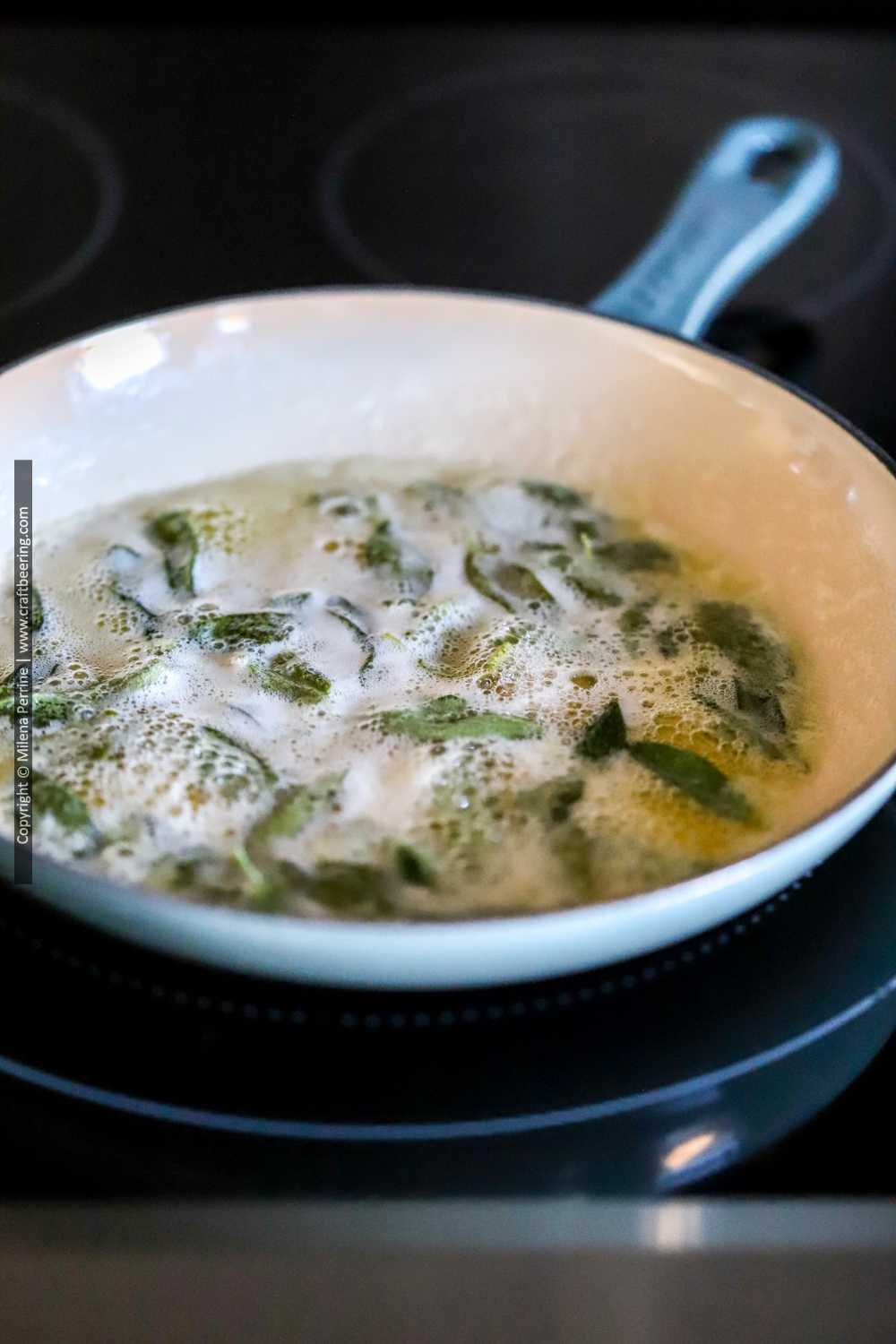
The melted butter begins to turn golden brown and develop a nutty flavor while the sage infuses it with its unique taste and becomes crispy.
What Happens in the Pan?
When butter is melted and further heated to 250 F its water content begins to boil off. A residue comprised of small white solids forms. These little specks are made of lactose and protein molecules. As they sink to the hot bottom of the skillet they react with each other and begin to brown and create the lovely toasted aromas (Maillard reaction).
The butter fat absorbs these aromas simultanelously with the essential oils coming from the sage leaves. The same process will work with thyme or basil leaves, but because they are more delicate you need to lift them from the pan sooner.
TIP: It is important to have the heat just right – not too strong or too low. Typically, the medium-high setting of most stoves is sufficient. However, both the material from which your skillet is made and the strength of your actual stove ring play a role.
Sage Brown Butter Sauce Gnocchi
Should you want to prepare gnocchi (or tortellini, ravioli etc.) in this luxurious sauce be sure to have them pre-cooked and ready to go before you start making the brown butter.
Method. Boil the gnocchi until it just floats to the surface, then drain it and brown it in a non-stick pan with just about a tablespoon of butter. Once it is golden and slightly crispy on the outside remove the pan from the heat and start working on your sage sauce. When you make it either pour it over the gnocchi or gently slide the gnocchi into the pan with the brown butter and toss.
Crispy Sage
If you are a fan of crispy sage and dream of sprinkling it over
- You can increase the number of sage leaves and deliberately remove a part of them onto a paper towel lined plate once they are crispy. Then use them as garnish to the dish you are preparing.
- Alternatively, if you are only after making crispy sage leaves – use olive oil for best results. Heat about 1/3 of a cup of oil in a deep pan until hot (over medium-high), add the sage leaves and fry them until they become crisp. This will happen fast, so work in batches of about ten leaves. Remove the fried sage to a paper towel and season with coarse salt.
You Might Enjoy
Beurre Blanc Sauce with Gose
Garlic Butter Sauce for Seafood
Cream Sauce Recipes (A Compilation)
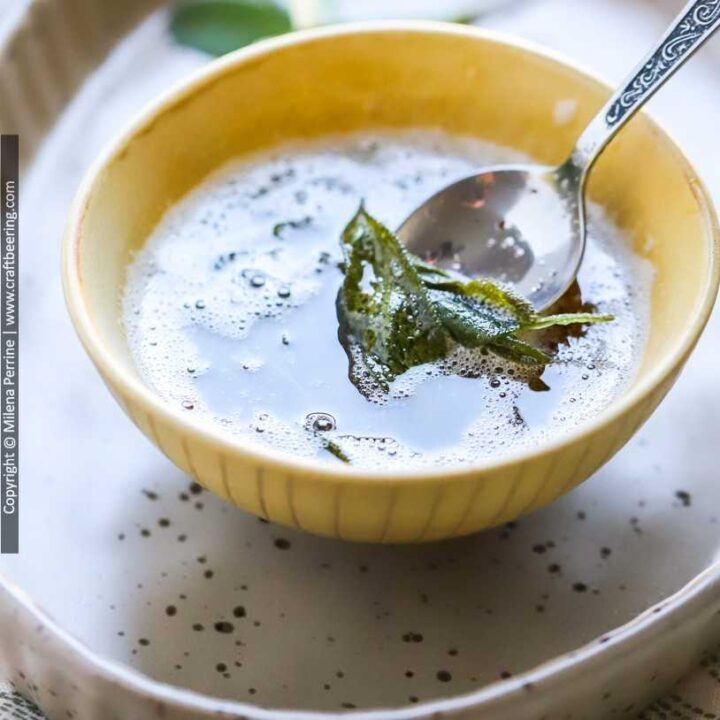
Multi-Purpose Sage Brown Butter Sauce
Brown butter sage sauce is a deeply flavored and warming melted butter sauce that comes together in just minutes. It adds complexity and richness to pasta, rice, fish and lean cuts or pork and chicken. It also works great for roasted vegetables such as butternut squash or as a dip for crusty rustic bread.
Ingredients
- 1 stick unsalted butter (8 tbsp)*
- 20-25 sage leaves
- salt and pepper, to taste
Instructions
- Wash and dry the sage, pick the leaves. Cut the butter into pieces.
- Heat a non-stick saucepan or a skillet over medium-high.** Add the butter and gently swirl as it melts.
- As soon as it starts to bubble add the sage leaves and gently stir to make sure they are nicely covered.
- Cook for about 2 minutes, until the butter browns lightly and releases a pleasant nutty smell. You will see white specks separate from the butter and sink to the bottom of the pan. Watch them closely (you may need to turn down the heat just a bit) as the melted butter begins to turn a golden brown and the specks themselves a pale brown.***
- Remove from the heat and season with salt and pepper.
Notes
Be sure to read the tips in the body of this post.
A note on yield: The typical 4 oz stick of butter will yield just about 1/2 cup of browned butter once melted. Better quality butter will contain less water to evaporate.
*Use European style whole butter for best results.
**A larger surface (about 8-10 inches) is preferred for faster cooking time.
***If you notice any smaller sage leaves turn too dark gently lift them out of the skillet with a slotted spoon before they burn.
To use this sage brown butter sauce for ravioli or gnocchi, first cook them and lightly brown them in a separate pan with a small quantity of butter (about a tablespoon). Keep warm and only then prepare the sauce, then toss together.
Nutrition Information:
Yield: 4 Serving Size: 1Amount Per Serving: Calories: 203Total Fat: 23gSaturated Fat: 14gTrans Fat: 0gUnsaturated Fat: 7gCholesterol: 61mgSodium: 77mgCarbohydrates: 0gFiber: 0gSugar: 0gProtein: 0g

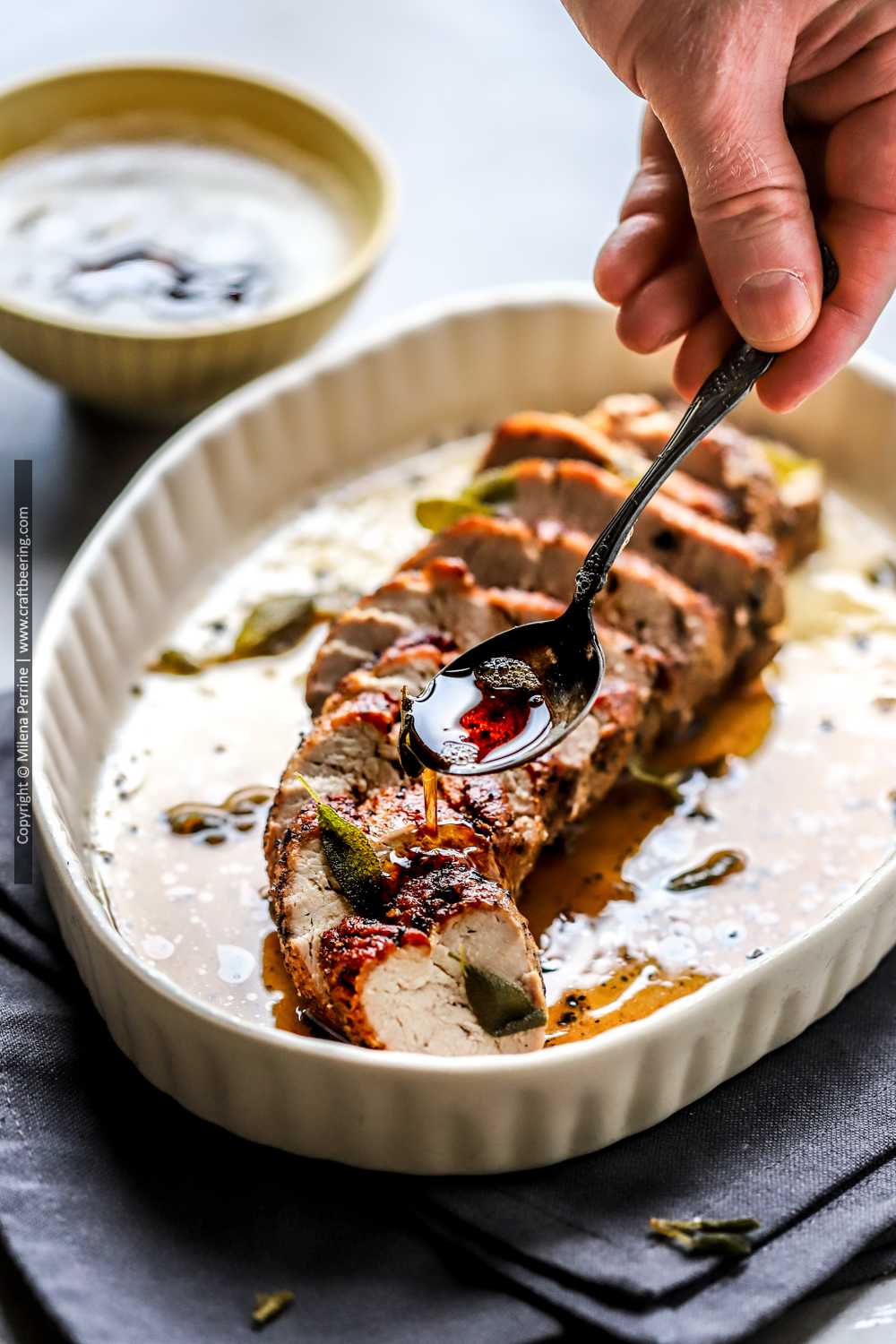
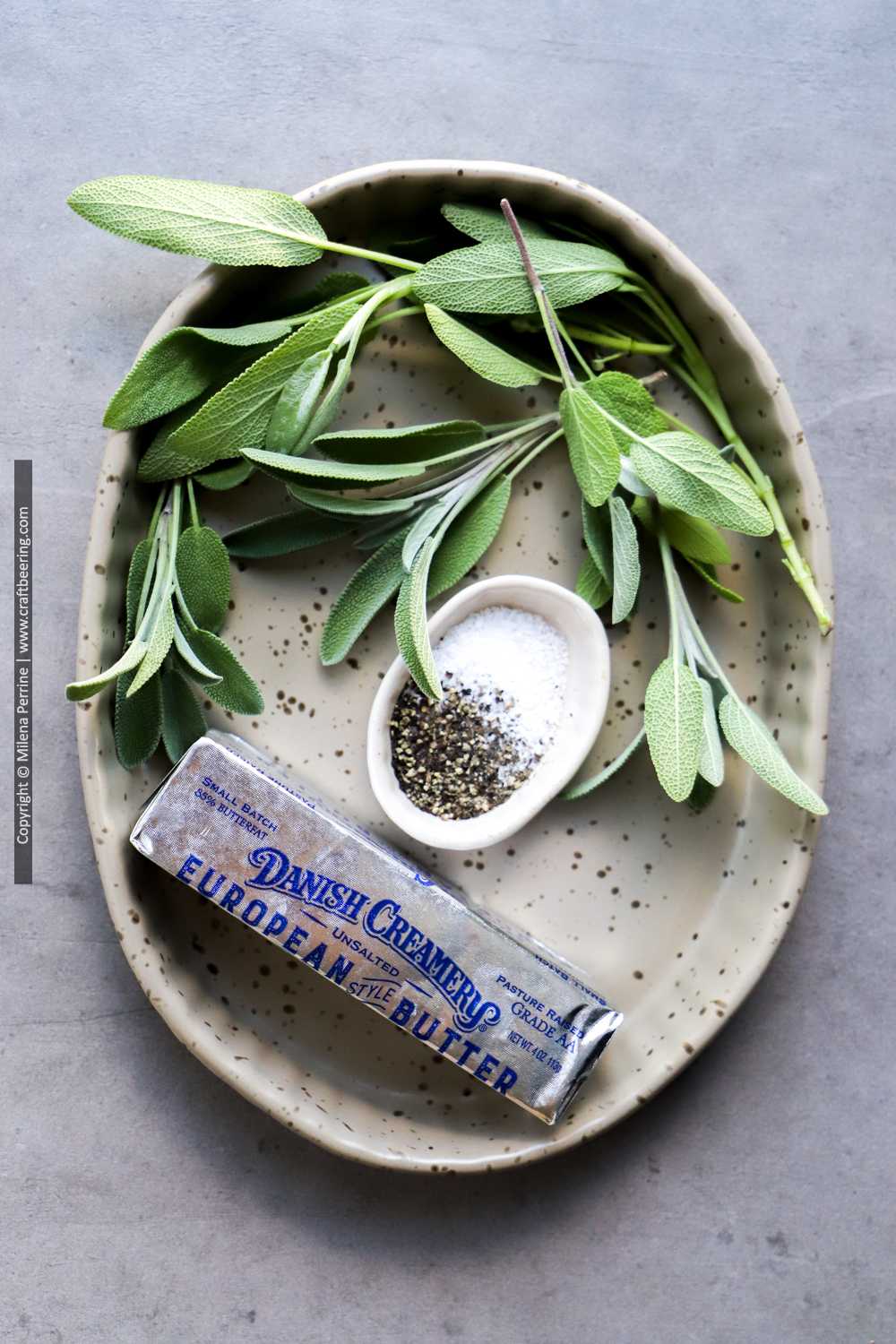
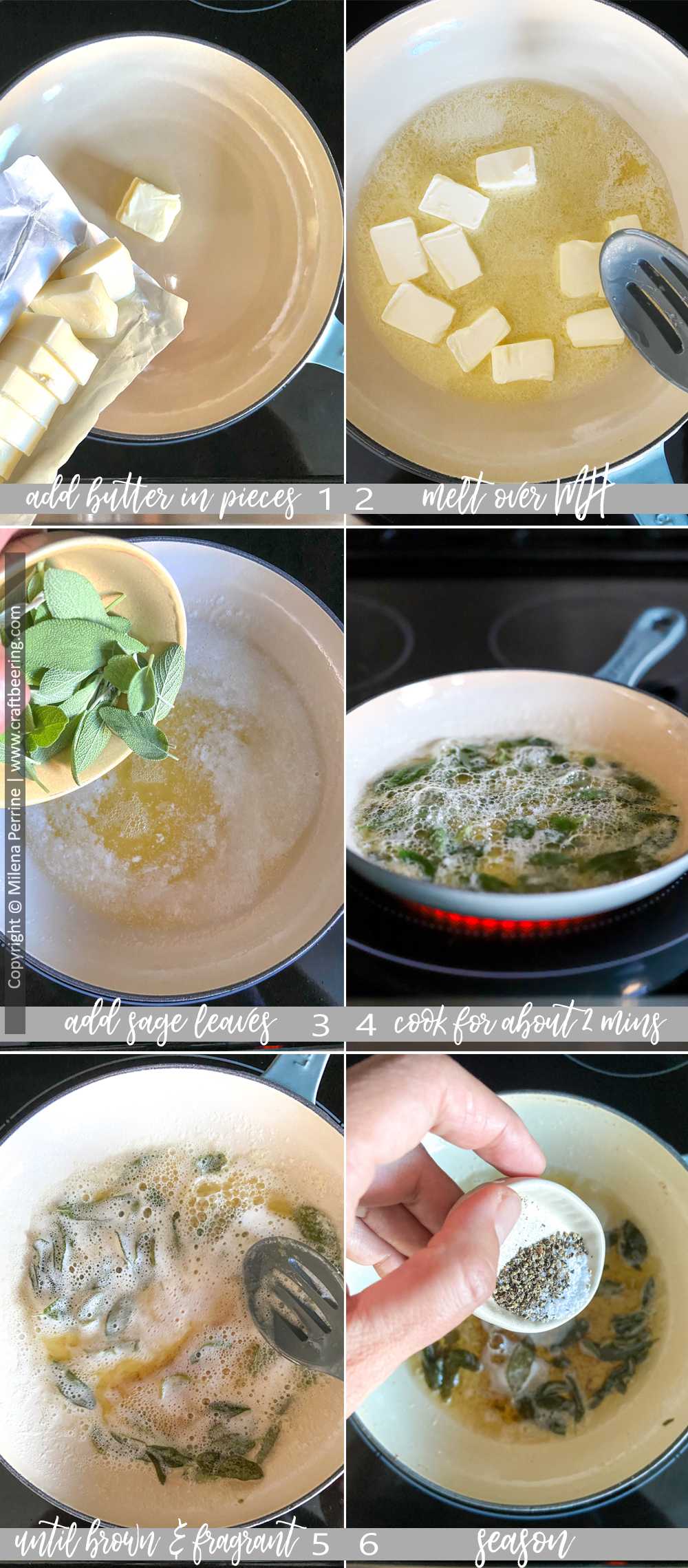
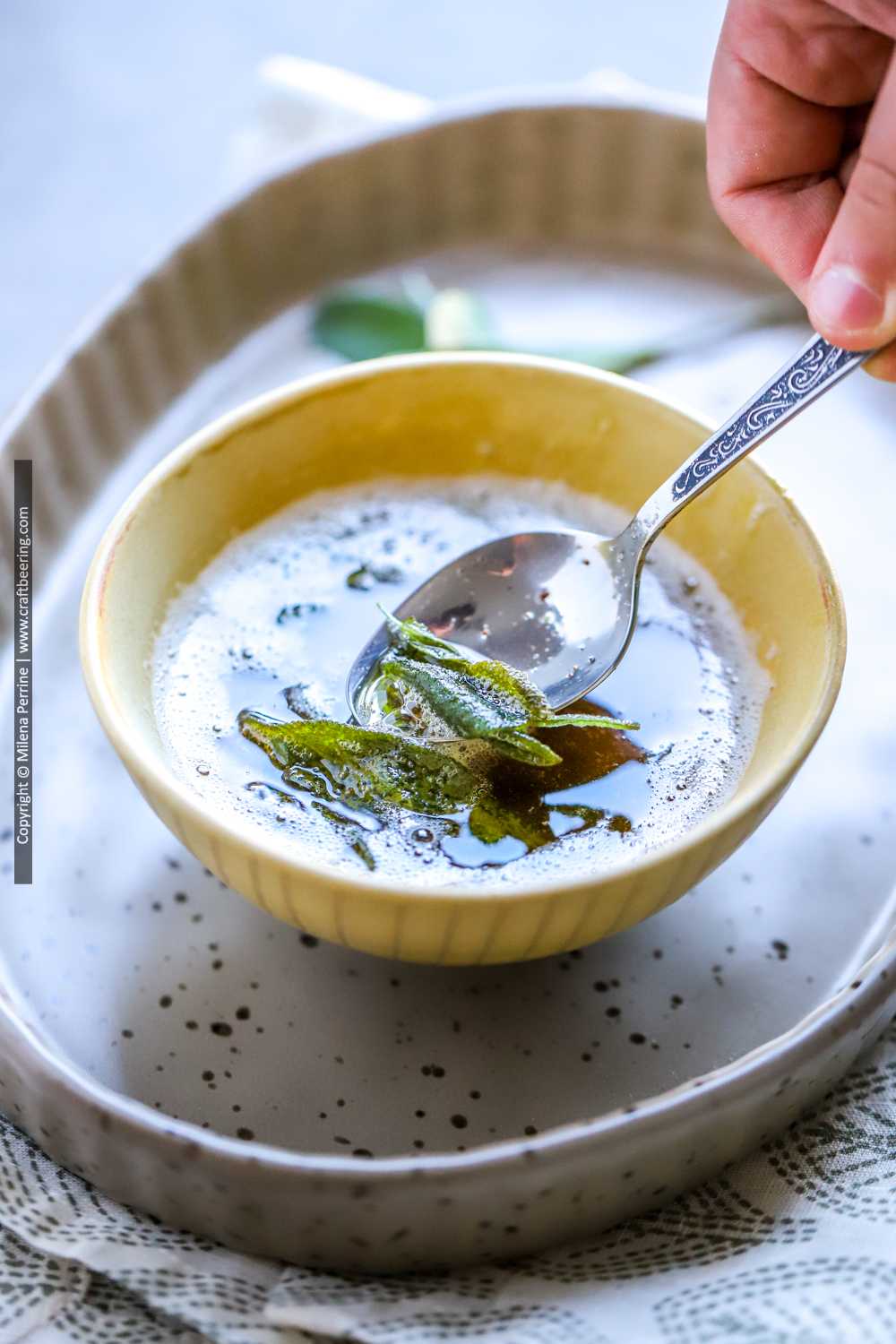
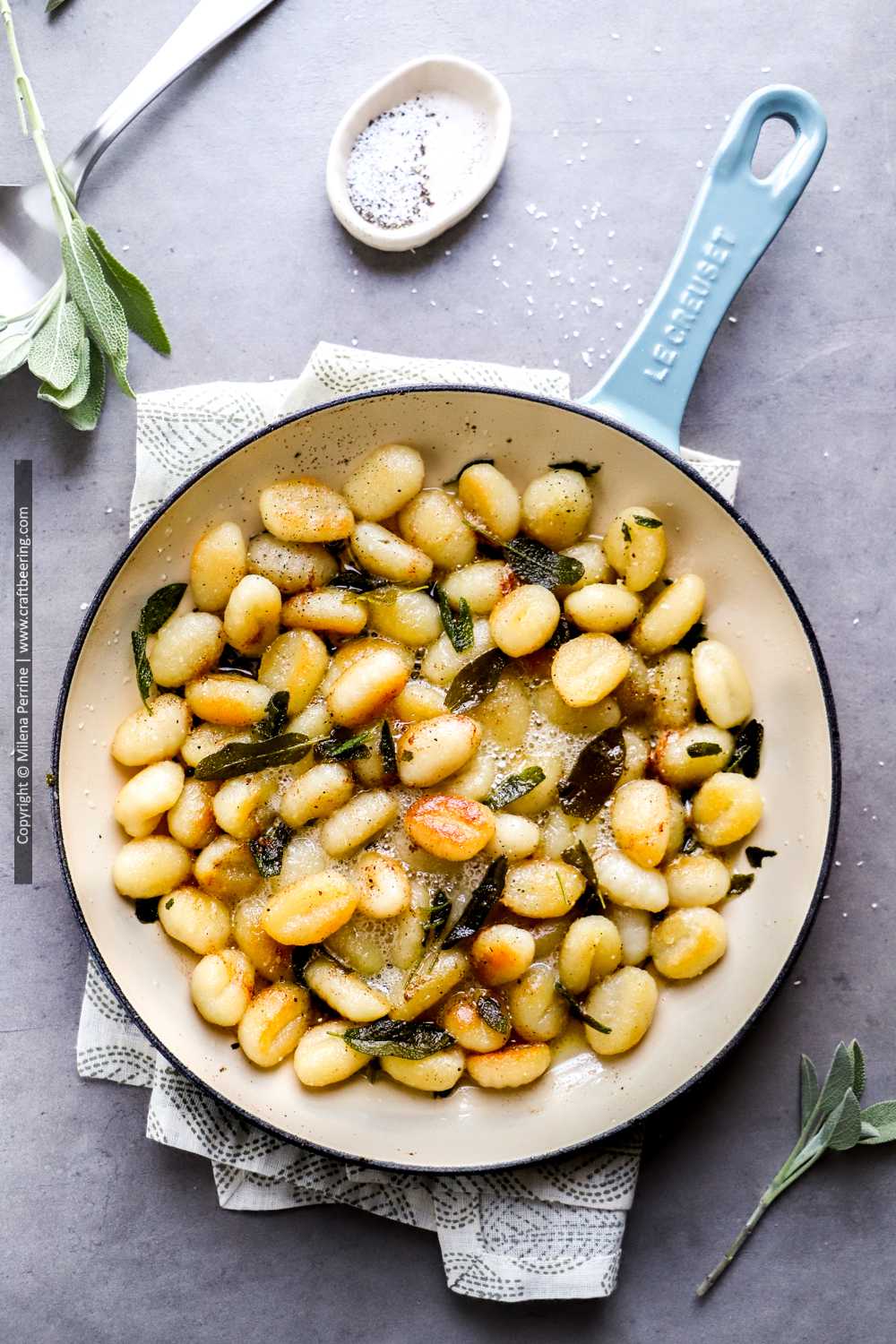
Leave a Reply